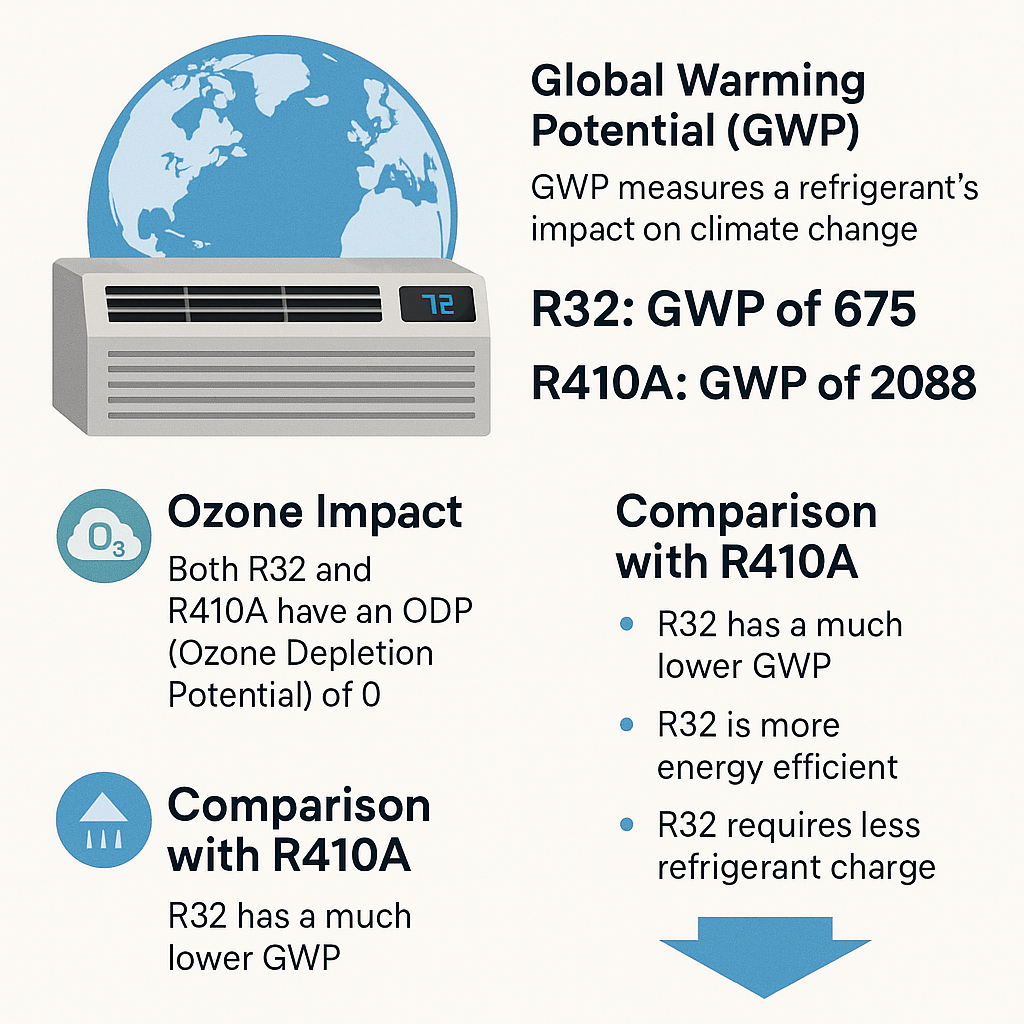Intro: What’s the Big Deal About R32?
If you’ve been in the HVAC game as long as I have, you’ve seen refrigerants come and go. First it was R22, then R410A took over. Now we’re seeing R32 rise up — and not just as a new option, but as the future of packaged terminal air conditioners (PTACs).
If you’re wondering what makes R32 so special, or whether it’s worth recommending to customers or using in your own installs, here’s what you need to know from a technician’s perspective.
🔬 What Is R32 and How’s It Different?
R32 (Difluoromethane) is a hydrofluorocarbon (HFC) refrigerant. Unlike R410A (which is a blend of R32 and R125), R32 is a single-component refrigerant. This makes it:
-
Easier to recycle and service
-
More stable in pressure and behavior
-
Better for heat transfer efficiency
Fun fact: R32 already makes up 50% of R410A — so it’s not “new,” we’re just leaning into the cleaner part of the blend.
🌍 Environmental Benefits (aka Why the EPA Likes It)
Here’s where things get serious. R32 has:
| Refrigerant | Global Warming Potential (GWP) | Ozone Depletion Potential |
|---|---|---|
| R410A | 2,088 | 0 |
| R32 | 675 | 0 |
That’s a 68% reduction in GWP compared to R410A. The EPA and other international agencies are pushing hard to phase out high-GWP refrigerants. R32 is approved under the EPA SNAP program and helps businesses future-proof their HVAC systems.
If you’re working on a retrofit, especially in a commercial space, this is an easy sell.
⚙️ Performance Benefits
From what I’ve seen in the field, R32 PTACs run cooler and more efficiently. They:
-
Deliver faster heat exchange
-
Run at lower pressures, which helps reduce wear on components
-
Use less refrigerant per system (around 30% less than R410A in many cases)
This translates to lower energy bills and longer system life — music to any facility manager’s ears.
🔧 Is It Safe to Use?
I get this question a lot. Technically, R32 is mildly flammable (A2L rating). But in PTAC systems, it’s sealed and managed with built-in safety features like:
-
Leak detection sensors
-
Internal safeguards
-
Correct charge sizing
As long as you follow basic install protocols and use certified equipment (like what we offer at The Furnace Outlet), R32 is safe and fully code-compliant.
🧰 What This Means for Techs Like Us
Here’s my bottom line: if you’re still only offering R410A units, you’re behind. R32 PTACs:
-
Install just like standard units
-
Give you an edge with eco-conscious clients
-
Are future-proof — and that matters when regulations change
I’ve been recommending them for hotels, dorms, senior living — anywhere that wants performance + efficiency with easy servicing.
🔁 Want to Learn More?
Check out the full R32 PTAC collection. And if you’ve got questions or need help on a job site, drop me a line — always happy to help a fellow tech.
Next toipc will cover: EPA Guidelines and R32: What Every Tech Needs to Know







